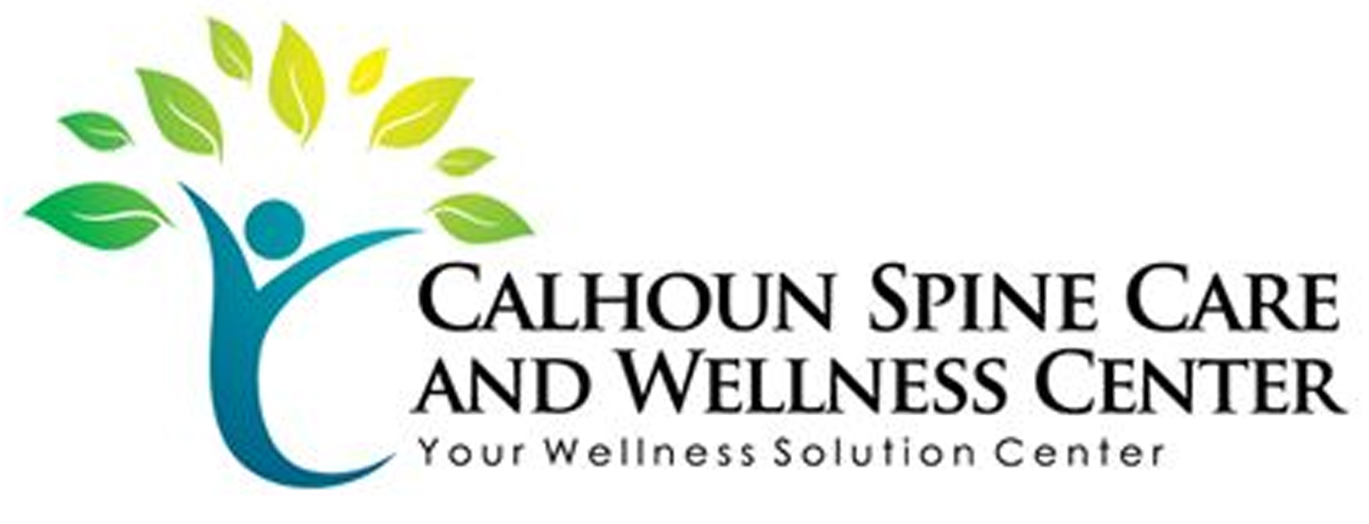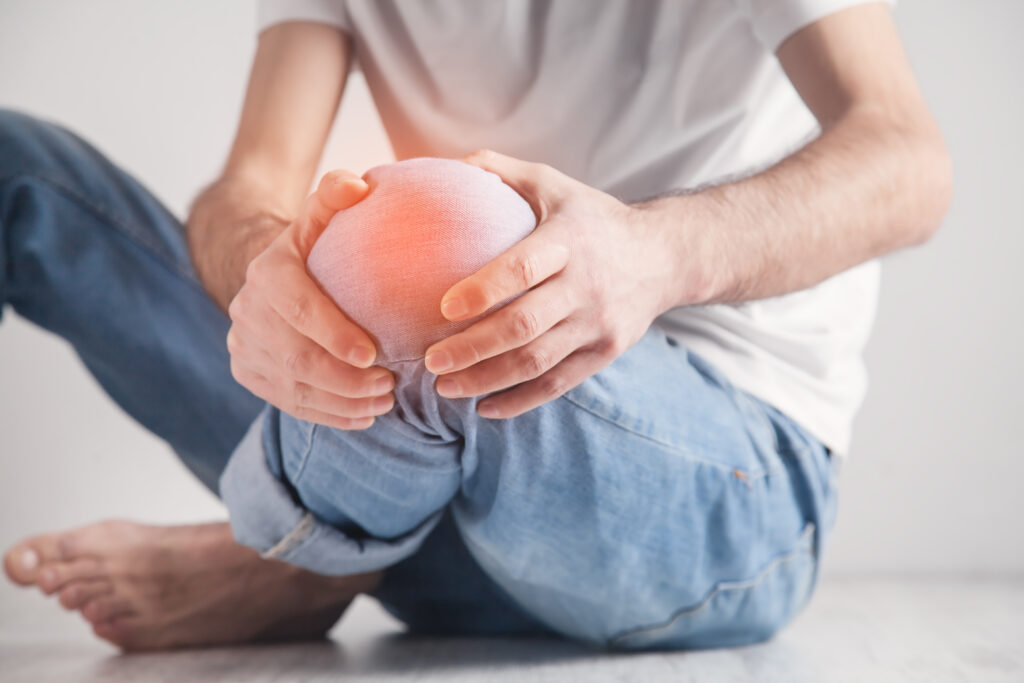If you're struggling with sciatica in Calhoun, you're not alone, and there are effective techniques that can help you find relief. By integrating stretching exercises, hot and cold therapy, and chiropractic adjustments into your routine, you can greatly alleviate discomfort. But that's just the beginning; lifestyle modifications and ergonomic adjustments play an essential role as well. Curious about how these methods can transform your daily life? Let's explore the ten best techniques that could make a considerable difference in your journey toward relief.
Stretching Exercises
When it comes to finding relief from sciatica, incorporating stretching exercises into your routine can make a significant difference. These stretches can help alleviate pressure on the sciatic nerve, improve flexibility, and promote overall spinal health. You don't need to be a yoga expert to reap the benefits; simple stretches can effectively target the muscles contributing to your discomfort.
Start with the piriformis stretch. Sit on the floor with your legs extended. Cross one leg over the other, placing your foot flat on the ground. Gently pull your knee toward your opposite shoulder, feeling the stretch in your buttocks. Hold for 20-30 seconds, then switch sides.
Next, try the hamstring stretch. While seated, extend one leg while keeping the other bent. Reach toward your toes, maintaining a straight back. Hold this position for 20-30 seconds and switch legs.
Another beneficial stretch is the seated spinal twist. Sit with your legs extended and bend one knee, placing your foot outside the opposite thigh. Gently twist your torso toward the bent knee, using your hand for support. Hold for 20-30 seconds before switching sides.
Incorporating these stretches into your daily routine can enhance mobility and reduce pain. Aim to stretch at least three times a week, and listen to your body—never push past your comfort zone.
You'll likely notice improvements over time, allowing you to enjoy a more active lifestyle without the nagging pain of sciatica holding you back.
Hot and Cold Therapy
Hot and cold therapy can be a powerful way to relieve sciatica pain. By alternating between heat and cold applications, you can target inflammation and improve blood flow in the affected area.
Here's how to make the most of this technique:
- Heat Therapy: Apply a heating pad or warm towel to the painful area for about 15-20 minutes. This can help relax tense muscles, enhance circulation, and alleviate stiffness. Just make sure it's not too hot to avoid burns.
- Cold Therapy: Use a cold pack or ice wrapped in a cloth on the affected area for 15-20 minutes. Cold therapy numbs the area, reducing inflammation and swelling. It's particularly effective right after an activity that aggravates your sciatica.
- Alternating Treatments: After your initial cold treatment, switch to heat to further soothe your muscles. You can alternate between heat and cold every 30 minutes, which might provide ideal relief.
Remember to listen to your body. If you feel any discomfort during these treatments, it's best to stop and consult a healthcare professional.
Both heat and cold therapy are easy to do at home, and they can greatly improve your comfort levels. By incorporating these methods into your routine, you can take proactive steps toward managing your sciatica pain and enhancing your overall quality of life.
Physical Therapy Techniques
When managing sciatica, physical therapy techniques can play an essential role in your recovery.
Incorporating stretching exercises, manual therapy, and core strengthening can help alleviate pain and improve mobility.
Let's explore how these approaches can benefit you on your journey to relief.
Stretching Exercises Benefits
Stretching exercises offer significant benefits for those dealing with sciatica, helping to alleviate pain and improve mobility. Incorporating regular stretching into your routine can make a noticeable difference in how you feel.
Here are three key benefits to evaluate:
- Increased Flexibility: Stretching helps lengthen tight muscles, particularly in the lower back and legs, which can reduce nerve pressure and discomfort associated with sciatica.
- Improved Blood Flow: Engaging in stretching exercises promotes circulation, delivering essential nutrients to muscles and tissues. This can aid in the healing process and reduce inflammation.
- Enhanced Posture: Many people with sciatica struggle with poor posture. Stretching strengthens core muscles and encourages proper alignment, which can alleviate pressure on the sciatic nerve.
Manual Therapy Approaches
In addition to stretching exercises, manual therapy approaches can provide considerable relief for sciatica sufferers. These techniques focus on hands-on manipulation of your muscles and joints, aiming to alleviate pain and improve mobility. When you work with a skilled physical therapist, they'll assess your condition and tailor the treatment to your specific needs.
One effective manual therapy technique is soft tissue mobilization. This method targets tight muscles and fascia, helping to release tension and promote blood flow.
You might also experience joint mobilization, where the therapist gently moves your joints to restore proper function and ease discomfort.
Another valuable approach is myofascial release, which focuses on relieving restrictions in the fascia surrounding your muscles. This can considerably reduce pain and improve your overall range of motion.
Additionally, trigger point therapy can help release painful knots in your muscles that contribute to sciatica symptoms.
Strengthening Core Muscles
Strengthening your core muscles is essential for alleviating sciatica pain and improving overall stability. A strong core supports your spine, reducing pressure on the sciatic nerve and helping to prevent future flare-ups.
Here are three effective exercises to incorporate into your routine:
- Planks: Start in a push-up position, maintaining a straight line from head to heels. Hold for 20-30 seconds, gradually increasing your time as you strengthen your core.
- Bridges: Lie on your back with knees bent and feet flat. Lift your hips towards the ceiling, squeezing your glutes at the top. Hold for a few seconds before lowering. Repeat for 10-15 reps.
- Bird-Dogs: Begin on all fours, extending one arm forward and the opposite leg back. Hold for a few seconds, then switch sides. This exercise enhances balance and core stability.
Incorporate these exercises into your physical therapy regimen, and you'll likely notice improvements in your sciatica symptoms.
Remember to consult a professional if you're unsure about your form or experience any discomfort. Strengthening your core can lead to a more active, pain-free lifestyle.
Chiropractic Adjustments
Chiropractic adjustments can provide significant relief from sciatica by improving alignment and reducing nerve pressure.
You'll find various techniques used during these adjustments, each tailored to your specific needs.
Understanding these benefits and methods can help you make informed decisions about your pain management.
Benefits of Chiropractic Care
Finding relief from sciatica pain often leads people to explore various treatment options, and chiropractic adjustments stand out as a highly effective choice.
When you choose chiropractic care, you're not just alleviating pain; you're also addressing underlying issues that contribute to your discomfort.
Here are three key benefits of chiropractic care for sciatica:
- Pain Relief: Chiropractic adjustments can considerably reduce sciatic pain by realigning the spine and relieving pressure on the sciatic nerve, allowing for improved mobility and comfort.
- Improved Functionality: Regular chiropractic care helps enhance your overall body function. By correcting misalignments, you'll notice better movement patterns and improved posture, which can prevent future flare-ups.
- Holistic Approach: Chiropractors focus on treating the whole person, not just the symptoms. They often provide lifestyle advice, exercise recommendations, and nutritional guidance to support your recovery and overall well-being.
Techniques Used in Adjustments
When it comes to relieving sciatica pain, understanding the techniques used in chiropractic adjustments can empower you to make informed choices about your care. Chiropractors often use specific spinal manipulation techniques, such as Diversified and Gonstead methods, to improve spinal alignment and reduce pressure on the sciatic nerve.
In the Diversified technique, your chiropractor applies quick, controlled thrusts to the affected joints. This method aims to restore proper movement and reduce nerve irritation.
The Gonstead technique involves a detailed analysis of your spine and pelvis, allowing for precise adjustments tailored to your unique needs.
Another common approach is the Activator Method, which uses a handheld instrument to deliver gentle impulses to specific areas of your spine. This technique is particularly beneficial for those who prefer a less forceful adjustment.
Additionally, some chiropractors incorporate soft tissue therapies, like myofascial release, to alleviate muscle tension and improve circulation.
This holistic approach enhances the effectiveness of spinal adjustments, promoting overall healing. By familiarizing yourself with these techniques, you can discuss your preferences with your chiropractor and choose the best method for your sciatica relief.
Acupuncture Benefits
Acupuncture offers a holistic approach to alleviating sciatica pain, tapping into the body's natural healing mechanisms. By stimulating specific points along the body's meridians, acupuncture can help relieve tension, reduce inflammation, and promote overall well-being.
If you're considering this technique, here are three key benefits that might interest you:
- Pain Relief: Acupuncture may help reduce your pain levels by releasing endorphins, the body's natural painkillers. Many people report significant relief after just a few sessions.
- Improved Circulation: The process can enhance blood flow in your body, which is vital for healing. Better circulation means more oxygen and nutrients reach the affected areas, supporting recovery from sciatica.
- Stress Reduction: Living with chronic pain can be stressful. Acupuncture not only addresses physical symptoms but also helps calm your mind. Many patients experience a deep sense of relaxation, which can contribute to an overall decrease in pain perception.
Incorporating acupuncture into your sciatica relief plan can be an effective way to manage your symptoms.
It's important, however, to consult with a qualified acupuncturist who understands your specific condition. This tailored approach guarantees that you receive the most benefit from your treatment.
As you explore your options for sciatica relief in Calhoun, consider acupuncture as a valuable addition to your wellness journey.
Pain Management Medications
When managing sciatica pain, medications can play an essential role.
You've got over-the-counter options that can provide quick relief, as well as prescription medications for more severe discomfort.
Understanding these choices can help you find the right approach for your situation.
Over-the-Counter Options
Finding effective relief from sciatica pain often starts with over-the-counter (OTC) medications. These options can help alleviate discomfort and make daily activities more manageable.
Here are three common OTC medications you might consider:
- Ibuprofen – This nonsteroidal anti-inflammatory drug (NSAID) not only reduces pain but also helps decrease inflammation around the sciatic nerve.
- Acetaminophen – While it doesn't have anti-inflammatory properties, acetaminophen can effectively relieve pain and is gentler on the stomach than some NSAIDs.
- Aspirin – Another NSAID, aspirin can provide pain relief and reduce inflammation, but it may not be suitable for everyone due to potential side effects.
Before starting any medication, it's a good idea to consult your healthcare provider, especially if you have underlying conditions or are taking other medications.
Keep in mind that while OTC options can provide temporary relief, they may not address the root cause of your sciatica. Combining these medications with other treatment techniques, like physical therapy or stretching, can often lead to better long-term outcomes.
Prescription Medications Overview
Prescription medications can play an essential role in managing sciatica pain, especially when over-the-counter options aren't sufficient. These medications typically fall into a few categories, each tailored to address specific aspects of pain and inflammation.
Nonsteroidal anti-inflammatory drugs (NSAIDs) like ibuprofen and naproxen can help reduce inflammation and alleviate pain. If you're still struggling, your doctor might prescribe stronger NSAIDs or corticosteroids, which can provide more potent relief but come with potential side effects.
Muscle relaxants are another option, especially if muscle spasms are contributing to your discomfort.
For chronic pain, your doctor might suggest medications originally developed for conditions like depression or epilepsy, such as gabapentin or duloxetine. These can help modify how your nervous system processes pain signals.
Lastly, opioids might be considered for severe pain, but they're typically a last resort due to the risk of dependence.
Always discuss the benefits and risks of any medication with your healthcare provider, and don't hesitate to ask about potential side effects or interactions with other medications you might be taking.
Lifestyle Modifications
Making simple lifestyle modifications can greatly alleviate the discomfort associated with sciatica. By making a few changes in your daily routine, you can reduce pain and improve your overall quality of life. Here are three significant adjustments you can implement:
1. Stay Active: Regular physical activity is vital. Engaging in low-impact exercises like walking, swimming, or yoga can strengthen your back and core muscles, providing better support for your spine.
Aim for at least 30 minutes of moderate exercise most days of the week.
2. Maintain a Healthy Weight: Carrying excess weight puts additional strain on your back and spine. By making healthier food choices and being mindful of portion sizes, you can work towards achieving a healthier weight.
This not only helps reduce pressure on your sciatic nerve but also contributes to overall well-being.
3. Prioritize Sleep: Quality sleep is essential for healing and recovery. Make sure your sleeping environment is conducive to rest—consider investing in a supportive mattress and using pillows to maintain proper alignment.
Establish a consistent sleep schedule and aim for 7-9 hours of sleep each night.
Ergonomic Adjustments
In addition to lifestyle modifications, incorporating ergonomic adjustments into your workspace and daily activities can greatly reduce sciatica discomfort.
Start by evaluating your chair. Choose one that supports your lower back and allows your feet to rest flat on the floor. If your chair isn't adjustable, consider using a cushion or footrest to achieve the right height.
Next, pay attention to your desk setup. Your computer monitor should be at eye level to prevent leaning forward, which can strain your back. An adjustable chair and monitor stand can help you find that ideal position.
When typing, keep your wrists straight and your elbows at a 90-degree angle. This minimizes tension in your back and neck.
If you spend long hours sitting, take regular breaks. Stand up, stretch, and walk around every 30 to 60 minutes. This simple activity can relieve pressure on your sciatic nerve and promote better circulation.
When sitting, try to use a lumbar roll or a small cushion to support your lower back's natural curve.
Also, consider your sleeping arrangements. A medium-firm mattress is often the best choice for spinal alignment.
If you sleep on your side, placing a pillow between your knees can help maintain proper hip alignment and reduce sciatica pain.
Yoga and Mindfulness
Yoga and mindfulness practices can be powerful tools for managing sciatica pain. By incorporating these techniques into your daily routine, you can improve flexibility, strengthen your core, and reduce stress levels—all of which contribute to easing discomfort.
Here are three effective yoga and mindfulness techniques to try:
- Gentle Stretching: Incorporate poses like Child's Pose, Cat-Cow, and Seated Forward Bend. These stretches can help alleviate tension in your lower back and hips, promoting better spinal alignment.
- Breath Awareness: Practice deep breathing exercises. Sit or lie comfortably, inhale deeply through your nose, and exhale slowly through your mouth. This technique calms the mind and helps reduce the perception of pain, making it easier for you to cope with sciatica.
- Meditation: Spend a few minutes each day focusing on your breath or visualizing a peaceful scene. This practice can help you cultivate mindfulness, allowing you to become more aware of your body and pain signals without reacting to them negatively.
Integrating yoga and mindfulness into your life isn't just about stretching; it's about creating a holistic approach to managing sciatica pain.
As you explore these practices, you might find not only relief from discomfort but also enhanced emotional well-being.
Supportive Footwear
Choosing the right footwear can considerably impact your sciatica pain management. Supportive shoes can help alleviate pressure on your lower back and spine, making a significant difference in your comfort level. When you walk or stand, your feet absorb shock, and if your shoes lack proper support, this can lead to increased pain radiating down your legs.
Look for shoes with a cushioned insole and adequate arch support. This helps distribute your weight evenly and reduces stress on your spine. Avoid high heels or flat shoes without support, as these can exacerbate your symptoms. Instead, opt for shoes that provide stability and a firm grip, which can prevent you from straining your back while walking.
Consider footwear with shock-absorbing soles. These can help minimize the impact on your joints and spine, contributing to a more comfortable experience throughout the day. Brands that focus on orthopedic designs often offer styles that combine support with aesthetics, so you don't have to sacrifice your sense of fashion for comfort.
Don't forget to replace your shoes regularly. Worn-out footwear can lose its supportive features and lead to discomfort. Pay attention to how your feet feel in your shoes; if you notice any pain or discomfort, it's time to reassess your options.
Ultimately, investing in the right supportive footwear can be a game-changer for managing sciatica pain. By prioritizing comfort and support, you'll be taking vital steps towards better overall well-being.
Conclusion
Incorporating these 10 techniques can greatly improve your sciatica relief journey in Calhoun. By blending stretching exercises, hot and cold therapy, and chiropractic adjustments, you'll address both symptoms and underlying issues. Don't forget the importance of lifestyle modifications and supportive footwear to enhance your comfort and mobility. With a holistic approach that includes mindfulness and ergonomic adjustments, you're well on your way to managing your sciatica effectively and reclaiming your daily activities.



